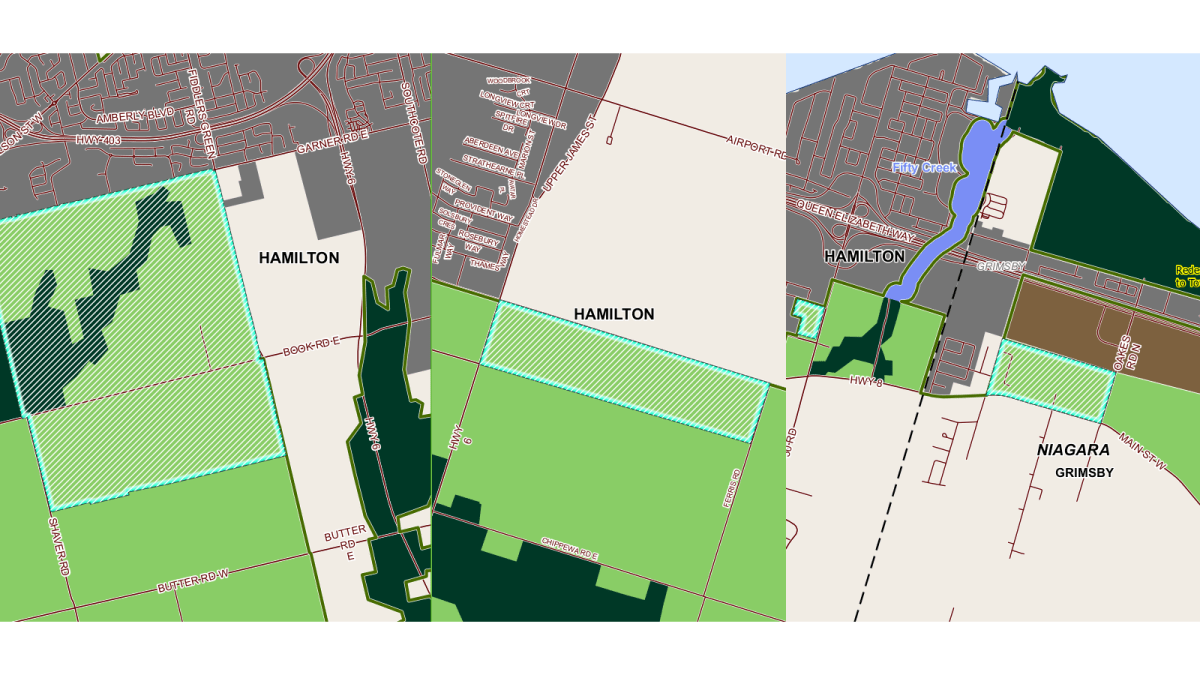Doug Ford used land in Hamilton’s east end, once targeted by local government for development, as a response to Mayor Andrea Horwath’s call to abandon building on the city’s Greenbelt lands.

Reacting to the Auditor General’s report that came out earlier this week, revealing preferred developers in the process stood to gain $8.3 billion in value, the premier pointed to a Stoney Creek plot he submits supports a “flawed” Greenbelt identification process.
“There’s one block in Hamilton, they call it the Greenbelt which is an absolute joke,” Ford said at a media event in Mississauga.
“And I’m going to bring a picture next time I’m in front of the cameras, there’s houses on all four sides in the middle of these houses, folks. There’s an empty field.”
The premier’s office confirmed 331 and 339 Fifty Road near Barton Street East is the land Ford was referring to.
In 2016, Hamilton politicians asked the province to remove several acres of the property, not far from St. Gabriel school, during a consultation to update Greenbelt legislation.
During a planning committee meeting, general manager Jason Thorne said city staff recommend removal due to the nature of surrounding developments and the fact the land was “unlikely to be farmed.”
However, when a final report was released in early 2017, the property remained part of the Greenbelt — two million acres of land that include some 700,000 acres of protected wetlands, grasslands and forests.
“I’ve been getting along real well with Mayor Horwath, I’m going to continue getting along, but you can’t … do one thing and then change your mind and say you can’t do anything,” said Ford.
“And I encourage the media to go to this area, take a picture and tell the real story. This is called the Greenbelt. It was flawed. They know it. We know it.”
The province earmarked 795 hectares in the Hamilton area to be taken out of the Greenbelt in late 2022 as documented in amendments posted with the Environmental Registry of Ontario.
Targeted for development are lands located south of Garner Road West, a plot south of White Church Road East and the space between 331 and 339 Fifty Road.
Hamilton’s chief planner says the parcel of land is four hectares removed by the province in late 2022, which equates to about 10 acres the premier referred to.
It makes up some 0.5 per cent of the 795 hectares removed, according to Steve Robichaud.
Local politicians have let it be known they prefer to accommodate future population growth through development that favours a combination of infill and intensification as per a late 2021 vote to hold firm to the city’s urban boundary.
The province estimates the city’s population will hit 820,000 by 2051 with the need for at least 50,000 new homes in the next decade.
Mayor Andrea Horwath is calling on the province to abandon development of Greenbelt lands in and around the city after insisting the auditor general “echoed” the city’s position that the lands are “not necessary” to fulfill obligations to beef up Ontario’s housing supply.
“We know there are available lands right now, … some 34 to 37,000 units right now in the pipeline that could be built at this moment — not to 2031, but right now in 2023,” Horwath said.
She reiterated previous insights provided by the city, saying many of the proposed land parcels would be difficult to develop.
Horwath insists species are at risk in watersheds and that construction within the Greenbelt likely means significant costs for infrastructure that will have to be “borne somewhere,” potentially by local taxpayers.










Comments